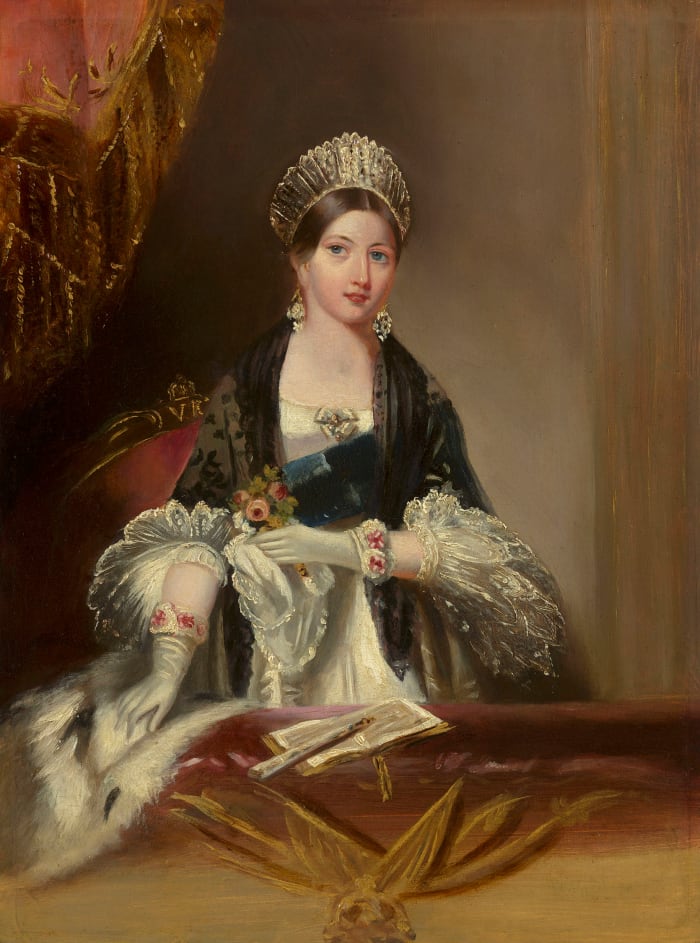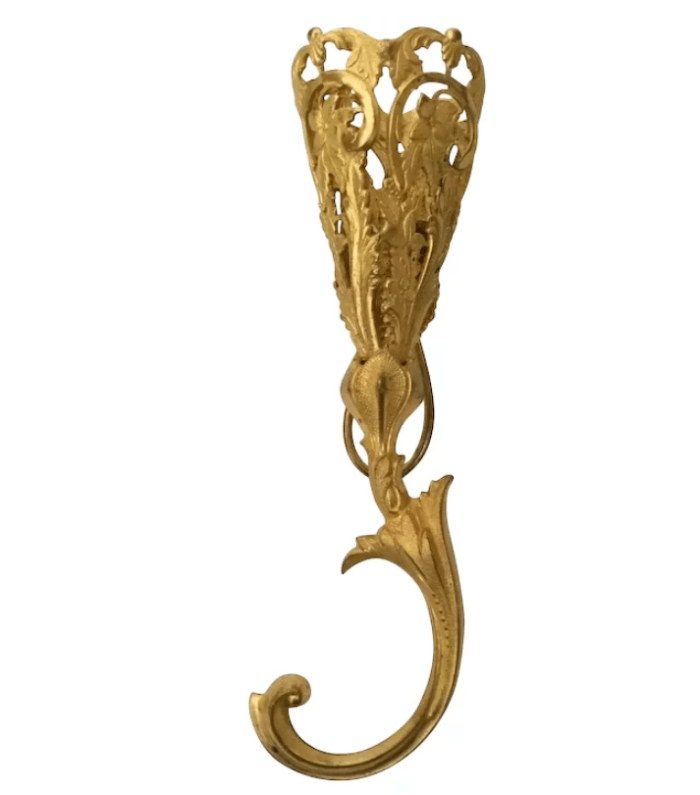#TussieMussies #Didnt
In medieval times, foul odors were thought to carry diseases — and since the streets smelled so bad from garbage and sewage, many women carried around small pomanders and vinaigrettes filled with bouquets of fragrant herbs and spices to offset the rank aromas.
By the 18th century, new decorative deodorizers arrived in the form of small vases, which could be pinned to clothing or held in the hand, so that one’s nostrils were never far from a fragrant bouquet of sweet-smelling posies.
In the 19th century, these posy holders still had the practical use of protecting from unpleasant odors, but they were now romanticized by the Victorians as a popular fashion accessory for young ladies to hold flowers brought by courting gentlemen callers. These small bouquets of flowers, called tussie-mussies, were a popular gift and carried by matrons, debutantes and girls. By the 1830s, using decorative holders to contain these small bouquets became an established fashion trend.
Here are 10 things to know about tussie-mussies and collectible posy holders:
Queen Victoria, who popularized tussie-mussies, is seen carrying one in this oil painting by Edmund Thomas Parris, circa 1837, who painted her while she was attending an opera at the Drury Lane Theatre.
Courtesy of the Royal Collection Trust
1. They Have Medieval Roots
A “tussie” is a nosegay, a Middle English word for a small group of flowers held together in a little bouquet and that was held at nose level; “mussie” refers to the moss that was moistened and put around the stems of the flowers to keep them from wilting. Hence the name “tussie-mussie.”
2. They Were Popularized by Queen Victoria
The term tussie-mussie (also tussy-mussy) dates back to the reign of trend-setter Queen Victoria (1837-1901), who was fond of carrying these little floral bouquets wherever she went. When the fashion of carrying hand bouquets in decorative holders caught the fancy of the wealthy and middle class, holders were copied and mass produced in a variety of sizes, materials, and embellishments.
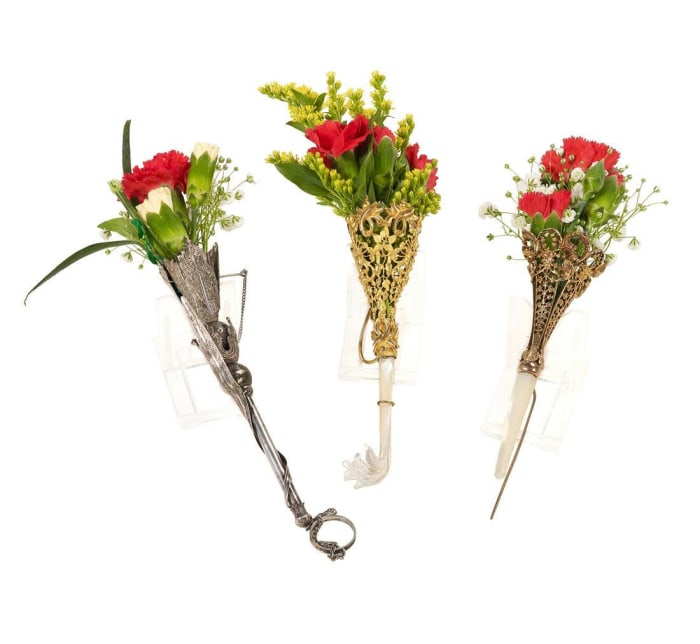
Three Victorian tussie-mussies, late 19th century: a silver thistle-form cup with embossed foliate panels and leaf-wrapped handle, chained pin and finger ring, 6” l; a gilt metal openwork conical cup with floral trelliswork and rococo scrolls, nacre handle and bodice pin, 5” l; and a gilt metal openwork conical cup embossed with acorns and foliate scrolls, acanthus scroll handle and bodice clip, 5-1/4” l; $950.
Courtesy of New Orleans Auction Galleries
3. They Went Hand in Hand with Floriography
Tussie-mussies also became important vehicles for floriography (language of flowers), one of the Victorians’ favorite preoccupations that they elevated to an art form. Different flowers had different meanings and these “talking bouquets” held secret messages that did not dare be said out loud in polite society. Great care was taken to combine flower selections in such a way that their meanings were accurately expressed. Not only did a certain flower have significance, but colors also expressed intent or emotions.
4. They Were a Popular Gift for Courtship
It was common practice at the beginning of a relationship for the gentleman to give the lady a tussie-mussie, and she had to be careful about how she wore the flowers on her dress: If she pinned it to the “cleavage of bosom,” that would be bad news for him, since that signified friendship; tussie-mussies held pointing downward were also a sign of rejection. But if a woman pinned it over her heart, her suitor could breathe a sigh of relief, as that was “an unambiguous declaration of love” or at least the green light for him to pursue away.
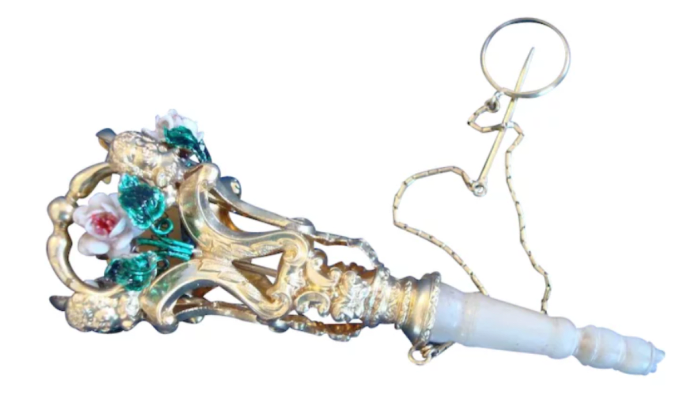
Gilt brass posy holder with four porcelain painted flowers with green leaves and four buse figural heads, 1860s-1890s, 4-7/8” l; $2,205.
5. They Were Worn in Posy Holders
Posy holders were created to keep delicate and expensive silk dresses and other pieces of clothing protected from water droplets when wearing a tussie-mussie. The handle of the posy holder collected the wet stems of the flowers together, preventing any water from escaping. The holder would be pierced-decorated (like a doily) or crafted in decorative floral shapes with a piece of moist moss wound around the base of the bouquet stems. The floral bouquet was pinned into the holder and then for a formal occasion would be suspended from her hand using a chain, so that she was free to dance or could climb out of a carriage or hold a railing while walking down stairs.
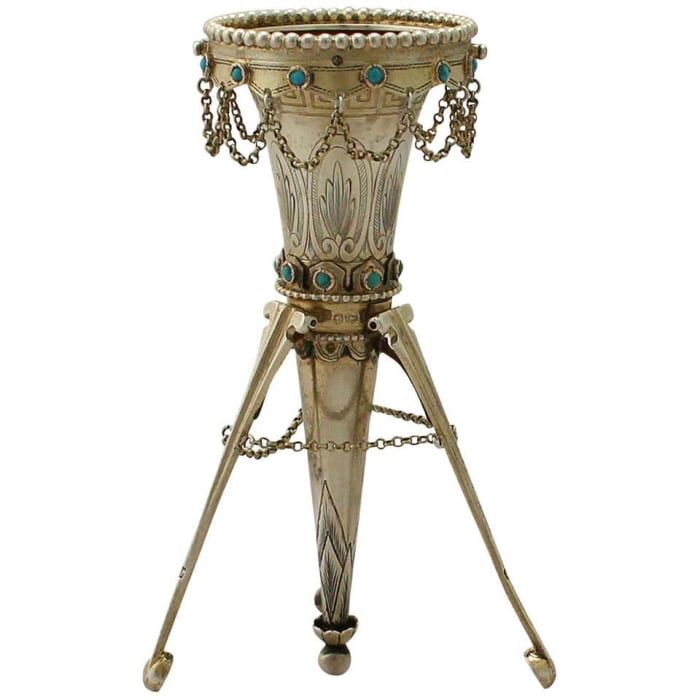
Victorian sterling silver posy holder, 1874, conical shaped form on three legs, embellished with bright cut engraved Greek Key fret band ornamentation and stylized leaves, beads, a scalloped border and collet-set cabochon turquoise, 5” h; $2,883.
6. Posy Holders Came in Different Varieties
Different types of posy holders were developed. The simplest shapes – cornet and cornucopia designs – were the most common. More unique, flower-shaped examples can also be found, and there were also some pieces with built-in tripod legs to prevent the floral arrangement from being crushed when placed on a flat surface.
7. Some Holders Were Pretty Flashy
The designs of posy holders could be surprisingly ornate and elaborate for such a tiny accessory. Made of gold, silver, ivory and silver plate, they were adorned with precious metals, glittering stones, pearls, shells, and even mirrors and miniature paintings. They were not only flashed around Victorian England, but also the courts of Versailles, Imperial Russia and 19th century China.
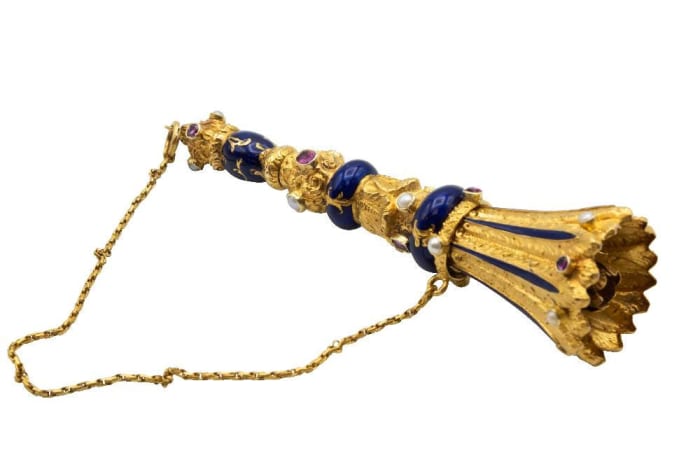
Gold and enamel posy holder, late 19th century, French import mark for Paris, decorated with collet-set rubies and pearls with cobalt blue enamel, 3-1/2” l; $3,875.
Courtesy of Elstob & Elstob
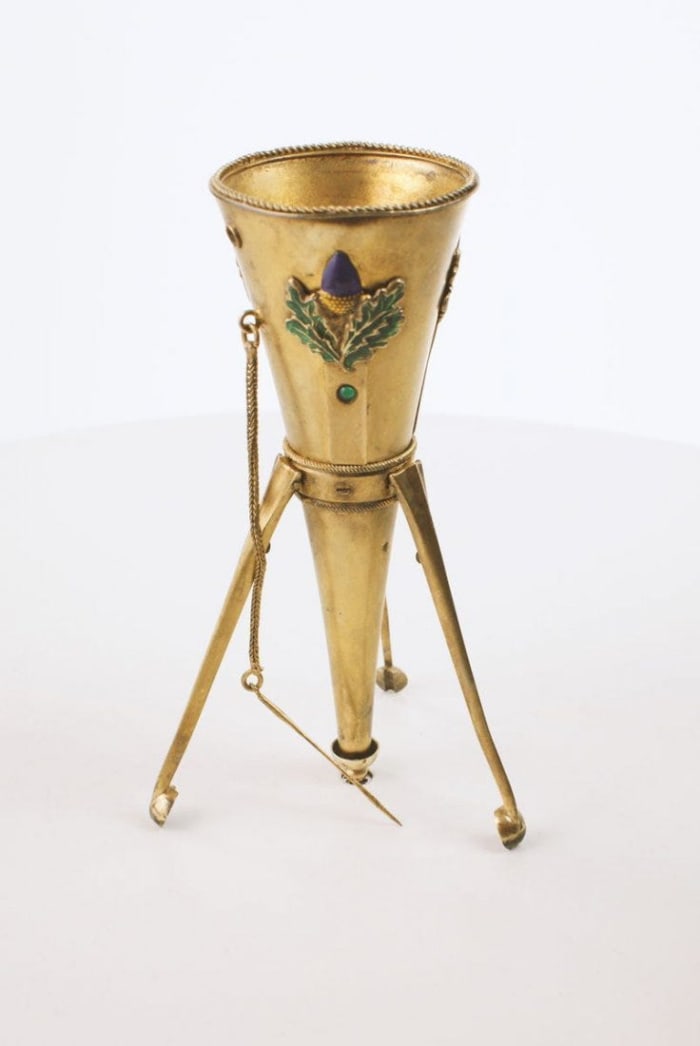
Funnel-shaped tripod holder, circa 1880, silver with a gold wash, raised purple enamel flowers with green leaves on three sides, floral pin attached at the neck, legs collapse into a small spring-loaded retaining cup at the tip when carried in the hand, 4-1/2” h; $2,600.
Courtesy of The Antique Enamel Company Auctions
8. Bigger Bouquets Pushed Them Out
Bouquet holders reached the peak of their popularity between the 1830s and 1880s, but began to dwindle as bouquets of long-stemmed flowers (the latest horticultural development) loosely tied with ribbons surpassed the tussie-mussie style. They were not totally out of fashion until the Roaring Twenties, when such objects became regarded as trivial and useless, according to the Smithsonian.
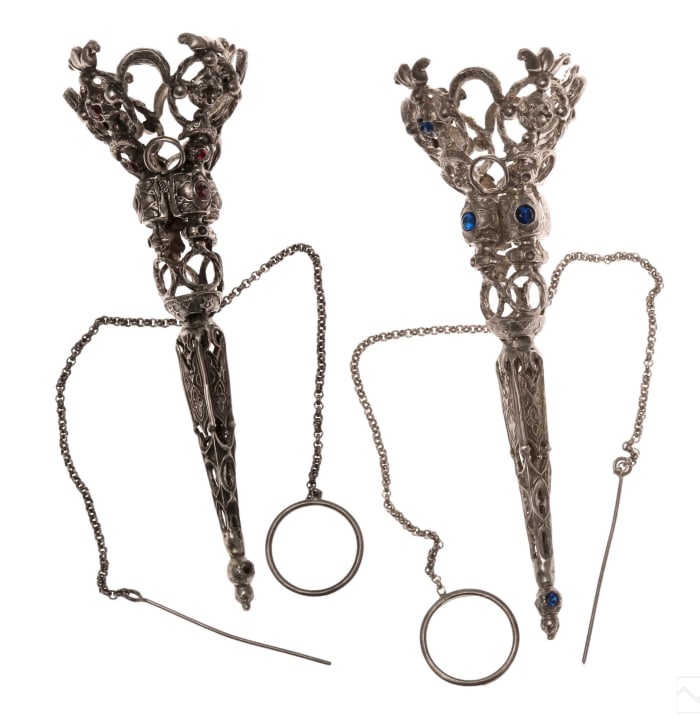
Pair of antique .900 fine silver tussie-mussie holders with red and blue crystals and an elaborate reticulated design set with glass jewels, 5-1/4” h; $275.
Courtesy of Hill Auction Gallery
9. Posy Holders Are a Popular Collectible
The diversity of styles and mechanisms of posy and tussie-mussie holders is evidence of their longevity as a fashion accessory, and collectors clamor for them today. They can be found at auctions, antiques shops and online shops. Although some can be found for under $100, prices at RubyLane.com, 1stDibs.com, Etsy.com and eBay.com are currently typically ranging from $200 to several thousands of dollars for gold and silver examples, especially when embellished with pearls or gemstones.
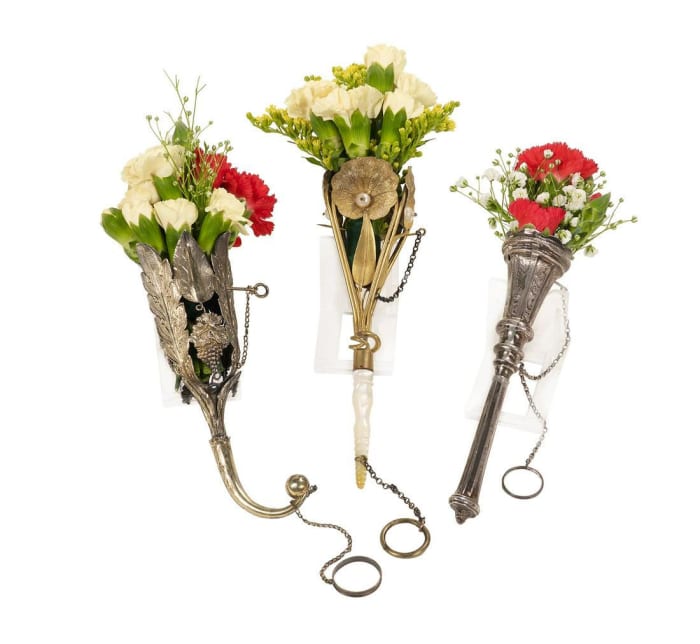
Lot of three Victorian tussie-mussies, late 19th century, each with a chained pin and finger ring: gilt metal with embossed lily pads centered by a faux pearl, turned nacre handle, 6-1/4” l; silver with tapering paneled cup and handle, engraved scrolls, 5-3/4” l; and gilt metal with embossed acanthus fronds and grape clusters, scroll handle with ball finial, 5-1/2” l; $950.
Courtesy of New Orleans Auction Galleries
10. There Are Books to Help You Learn More
There are several good guides on tussie-mussies and posy holders, if you would like to learn more. Books by Geraldine Adamich Laufer and Chip Jamison, Tussie-Mussies: The Victorian Art of Expressing Yourself in the Language of Flowers (1993) and Tussie-Mussies: The Language of Flowers (2000), explain the symbolic meanings of flowers and herbs and teach you how to make your own “talking bouquets.” Laufler also shows how to make them here, with step-by-step instructions. Tussie-Mussies: A Collector’s Guide to Posy Holders (2016) by Irene Deitsch, who has been collecting them for more than 25 years, showcases more than 100 posy holders organized by their materials, as well as their styles and shapes, such as bosom bottle vs. three-legged tripod, and handheld vs. lapel pin.
You might also like:
Victorians Used Flowers to Send Secret Messages

